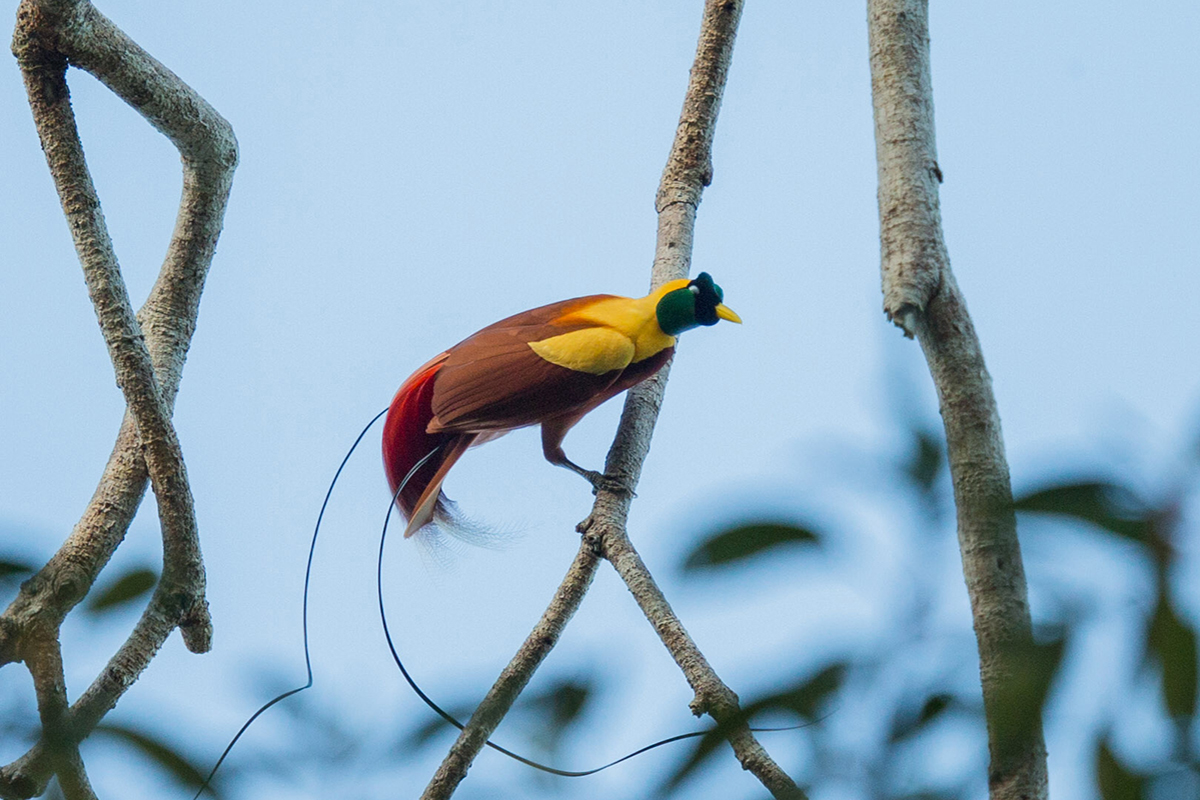Exploring Raja Ampat’s Unique Wildlife
Raja Ampat is renowned for its underwater biodiversity, but its ecosystems on land are equally fascinating. These lush island habitats host a wide array of avian and terrestrial species that will thrill nature lovers and conservationists alike. For those willing to venture beyond the coral reefs, Raja Ampat offers a treasure trove of unique wildlife experiences.
Birds of Paradise
Raja Ampat is a haven for birdwatchers and is home to spectacular species like the Wilson’s Bird of Paradise and the Red Bird of Paradise. These iconic birds, known for their vibrant plumage and elaborate mating dances, are best seen during early morning treks through the islands’ dense rainforests. Tours can be arranged through Papua Paradise Eco Resort, which provides guided excursions to maximize the chance of sightings.
These elusive birds are most commonly found on the islands of Gam, Batanta, and Waigeo. Their courtship displays, which involve intricate dances and preparation of their surroundings, are a highlight for visitors lucky enough to witness them.
Cuscus and Other Mammals

The spotted cuscus, a marsupial native to the region, is another unique inhabitant of Raja Ampat’s forests. These nocturnal creatures, with their soft, spotted fur and large eyes adapted for low light, are most often found resting in the canopy by day and feeding on fruits at night.
Because of their secretive nature, little is known about their exact population numbers, but their presence is a testament to the rich biodiversity of these remote rainforests. Other mammals, such as bats and small rodents, also play a role in the region’s ecosystem, contributing to seed dispersal and pollination.
Insects and Butterflies

Raja Ampat’s forests are alive with a dazzling variety of insects, including colorful butterflies such as the Raja Brooke’s birdwing. This species, with its striking green-and-black wings, was named by the famous naturalist Alfred Russel Wallace in 1855, after James Brooke, the Rajah of Sarawak at the time.
Raja Brooke’s birdwing is a highlight for entomologists and nature enthusiasts, but it is just one of thousands of insect species found in the region. Beetles, ants, and dragonflies also populate these forests, many of which remain undocumented due to limited research in this area. For those interested in microfauna, guided walks through the forests provide a glimpse into this vibrant and often overlooked world.
Mangroves and Coastal Forests
Mangrove ecosystems are a crucial component of Raja Ampat’s natural landscape. These coastal forests serve as nurseries for marine life, providing shelter and breeding grounds for fish, crabs, and shrimp. Above the waterline, mangroves are home to unique birds, insects, and reptiles. Visitors can explore these ecosystems via kayaking tours or guided treks, which reveal the interplay between land and sea.
Mangroves are not only vital to Raja Ampat’s biodiversity but also play an essential role in mitigating climate change. By storing large amounts of carbon and protecting coastlines from erosion, these forests contribute significantly to environmental stability.
Hidden Treasures and Uncharted Discoveries
The biodiversity of Raja Ampat extends beyond what is already known. With thousands of species documented and many more yet to be discovered, the region remains a frontier for scientific exploration. The dense rainforests, isolated islands, and untouched habitats offer opportunities for new discoveries in both terrestrial and marine ecosystems. From tiny, colorful insects to elusive mammals and vibrant birds, Raja Ampat’s unique wildlife continues to draw visitors and researchers.
Would you be interested in the wildlife of Raja Ampat even on a dive trip? Leave us a comment about this in the box below.



